Joe Raine asked me why I put so much paint on the exhaust manifolds and bellhousing so, I thought I would answer that and stir some discussion on the subject of restoration painting of the motor. I'm no knower of all knowledge but, I painted this one based on what I think I know of the process.
This is a 1967 435 and, IMO, the exhaust manifolds were on the car when the motor was painted as was the bellhousing. Here is a pic John Hinckley has shared with the membership previously...

For whatever reason, evidence shows Tonawanda engines had more complete coverage of the bellhousings although this one has very thin paint on the bottom. The coverage of the outside of the exhaust manifolds is fairly complete (much will burn off immediately when the motor is started) whereas the backside has little or no coverage. Also the side of the block has very little coverage behind the exhaust manifolds. Lastly, I believe the exhaust manifold studs were attached during painting and a very knowledgeable member here has shown me original studs with orange paint...



The back of the water pump and the front of the timing chain cover were very thin in coverage...

This is a 1967 435 and, IMO, the exhaust manifolds were on the car when the motor was painted as was the bellhousing. Here is a pic John Hinckley has shared with the membership previously...

For whatever reason, evidence shows Tonawanda engines had more complete coverage of the bellhousings although this one has very thin paint on the bottom. The coverage of the outside of the exhaust manifolds is fairly complete (much will burn off immediately when the motor is started) whereas the backside has little or no coverage. Also the side of the block has very little coverage behind the exhaust manifolds. Lastly, I believe the exhaust manifold studs were attached during painting and a very knowledgeable member here has shown me original studs with orange paint...



The back of the water pump and the front of the timing chain cover were very thin in coverage...

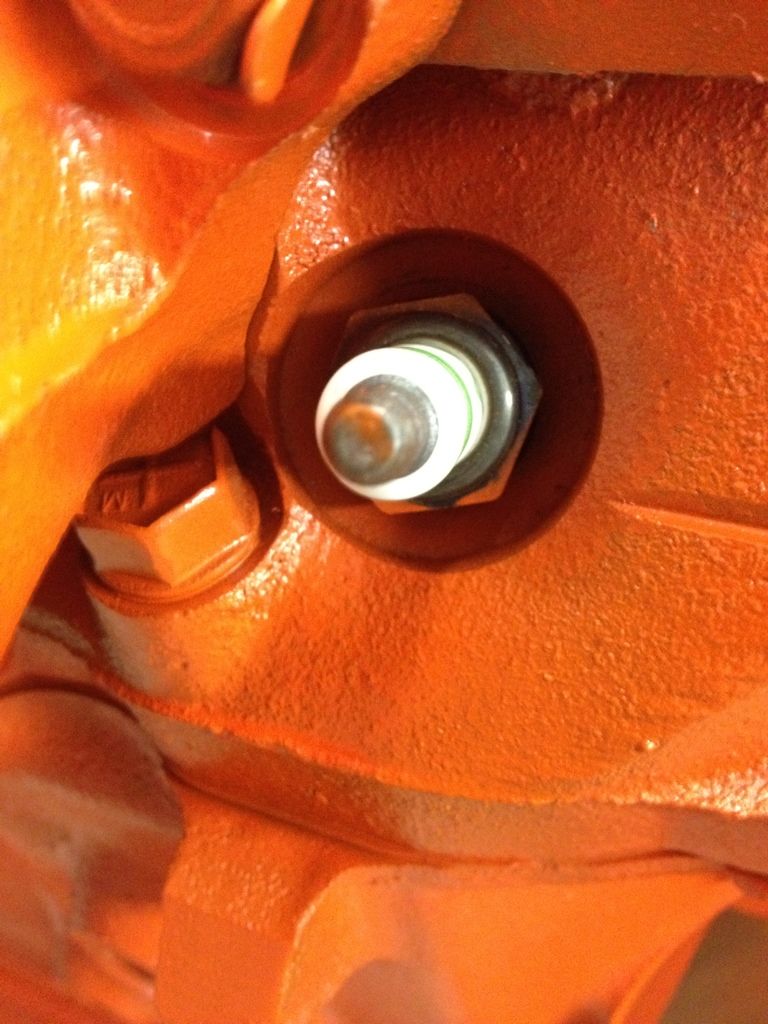
 ...
...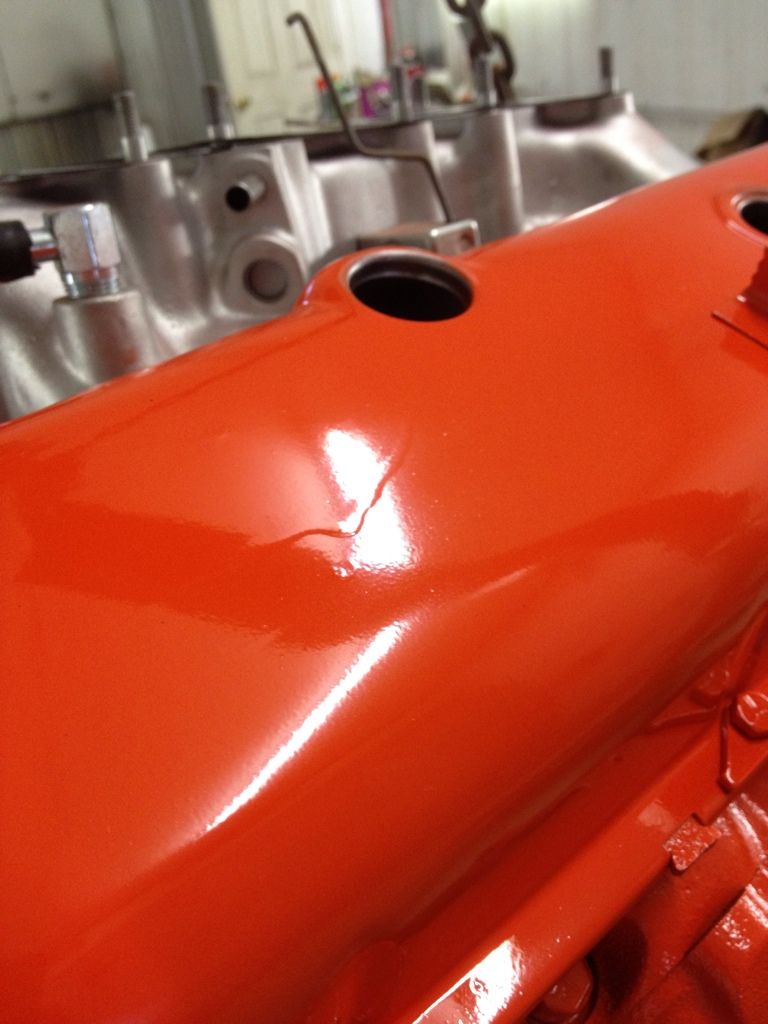

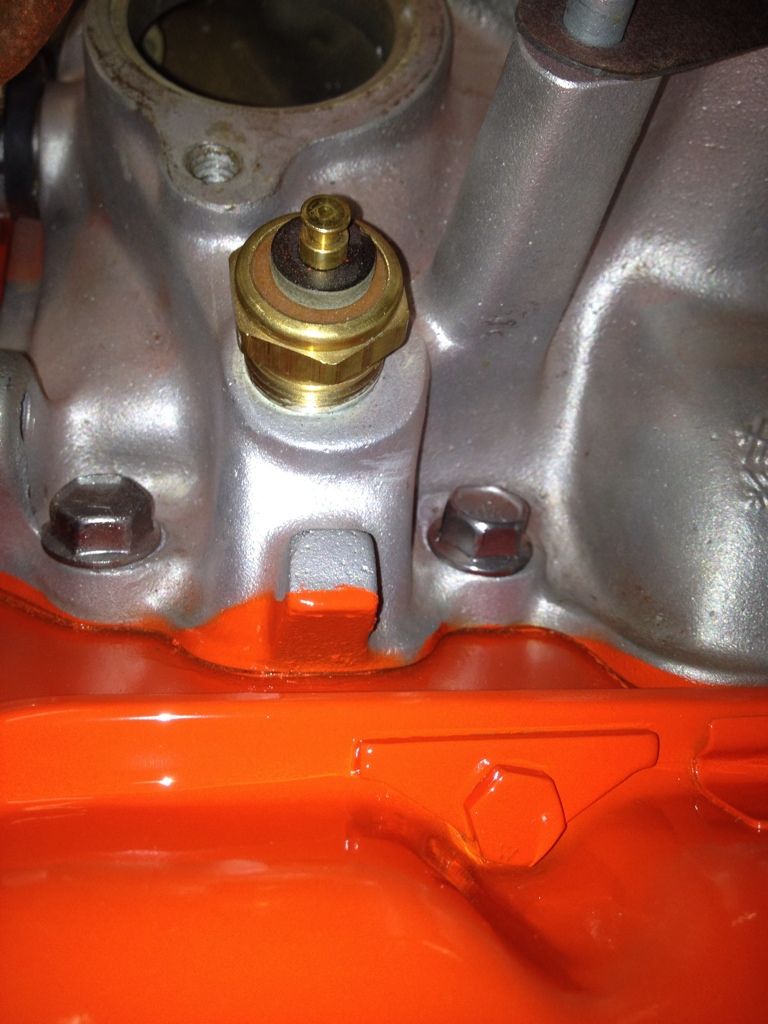

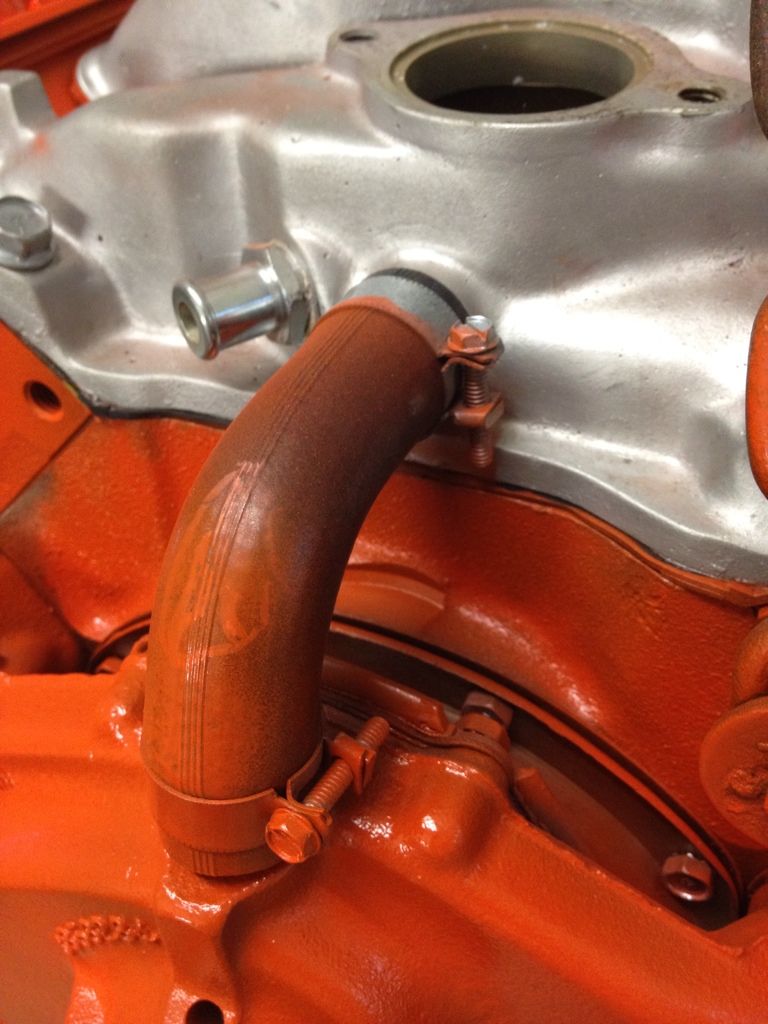
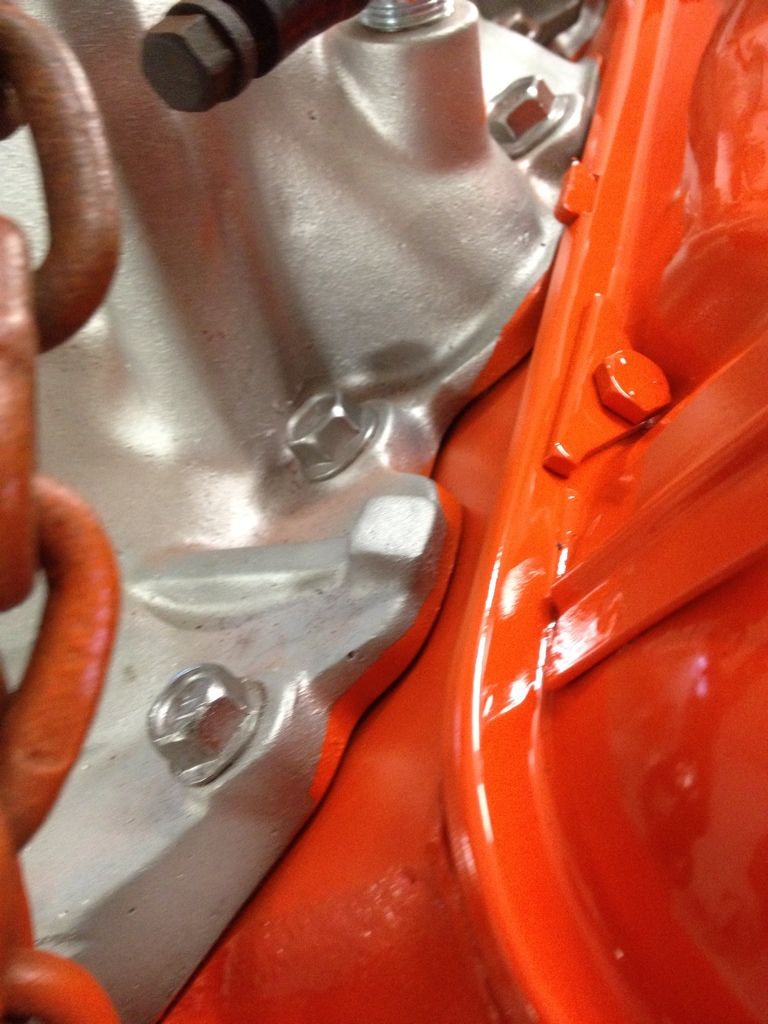
 )
) 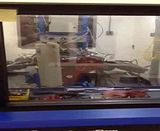
Comment